As the cryptocurrency market continues to grow, so does the need for secure ways to store digital assets. Crypto cold wallets, or hardware wallets, are among the most reliable solutions for safeguarding crypto assets. Unlike hot wallets connected to the internet, cold wallets store private keys offline, significantly reducing the risk of hacking and unauthorized access.
When selecting a cold wallet, key factors such as security, ease of use, coin compatibility, and portability play crucial roles. This article compares six of the best crypto cold wallets on the market, helping you make an informed choice.
- ELLIPAL Titan 2.0 – Best for air-gapped security and mobile-friendly usage.
- Ledger Nano X – Best for Bluetooth connectivity and wide coin support.
- Keystone 3 Pro – Best for open-source firmware and multi-sig compatibility.
- Trezor Safe 5 – Best for enhanced security and user-friendly design.
- SafePal X1 – Best for affordability and secure offline storage.
- ELLIPAL Titan Mini – Best for compact design and full air-gapped protection.
Table of Contents
Top 8 Crypto Cold Wallets
Here’s a detailed review of the latest and most trusted crypto cold wallets:
ELLIPAL Titan 2.0
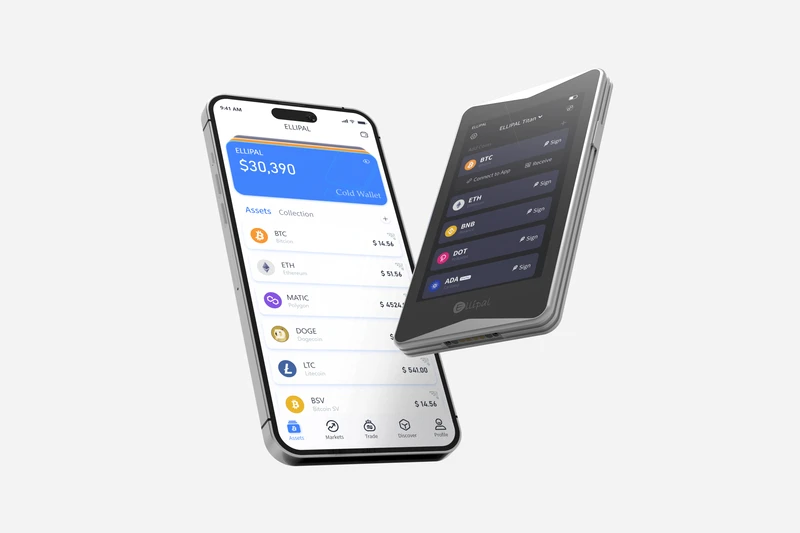
The ELLIPAL Titan 2.0 is a state-of-the-art cold wallet designed for the secure storage of a wide range of cryptocurrencies and NFTs. Known for its air-gapped technology, this wallet ensures that your assets remain offline and protected from online threats like hacking. It’s built with a CC EAL5+ certified secure element, enhancing its defense against physical tampering and supply chain attacks. The wallet features an intuitive 4.0-inch HD IPS touchscreen, making transactions and management straightforward. While it supports an extensive list of over 10,000 tokens and integrates with platforms like MetaMask, some users have noted challenges with firmware updates and customer service responsiveness.
Key Features
- Touchscreen Display: A 4-inch full HD IPS touchscreen for signing transactions with confidence.
- Wide Crypto Support: Compatible with over 10,000 cryptocurrencies and tokens, including NFTs.
- Decentralized App Connection: Connect to dApps using QR codes.
- Enhanced Security: Two-factor authentication and backup/recovery options ensure your assets remain safe.
| 👍Pros | 👎Cons |
|---|---|
| Completely air-gapped for security | Relatively expensive compared to competitors |
| Durable, tamper-proof metal body | Limited to interaction with the ELLIPAL ecosystem |
| Supports a vast array of cryptocurrencies and NFTs | Bulkier design may not suit everyone |
| User-friendly touchscreen interface | |
| PIN & Passphrase Protection | |
| Secret Secondary Wallet for backups | |
| PCI-level self-destruction feature | |
| Easy-to-use mobile app integration |
Ledger Nano X
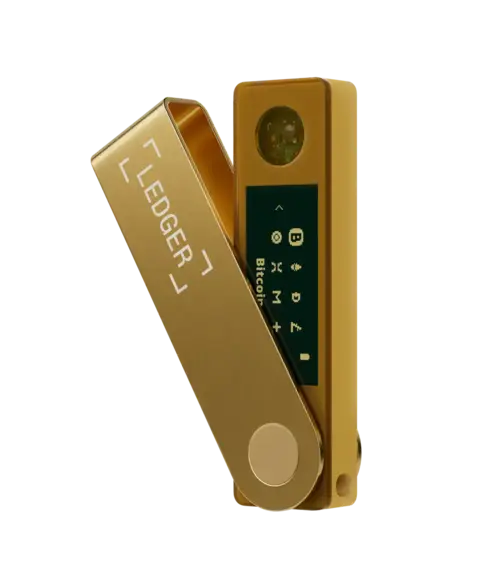
The Ledger Nano X is a premium hardware wallet designed to securely store and manage cryptocurrencies. With advanced Bluetooth connectivity, it offers a seamless balance between security and convenience, enabling users to manage their assets on the go. Supporting over 5,500 cryptocurrencies and tokens, the Nano X is compatible with the Ledger Live app for a streamlined experience in sending, receiving, and staking assets. Built with a robust design and incorporating Secure Element (SE) technology, it ensures maximum protection against both physical and digital threats. The Nano X is an excellent choice for users who prioritize a blend of portability, compatibility, and cutting-edge security.
Key Features
- Bluetooth for Mobile Use: Allows secure, wireless connection to your smartphone or tablet, enabling on-the-go crypto management.
- Multi-Currency Support: Supports over 5,500 cryptocurrencies and tokens across various blockchains.
- Ledger Live Integration: Manage, stake, and monitor your portfolio through a user-friendly app.
- Battery Powered: Comes with a 100mAh rechargeable battery for portable use, offering several hours of operation without a USB connection.
- Recovery Seed Backup: 24-word recovery phrase ensures assets can be restored in case of loss or damage.
| 👍Pros | 👎Cons |
|---|---|
| High security with a certified secure element | Bluetooth can be a security risk if not used with caution |
| Bluetooth for convenient mobile access | No touchscreen, only physical buttons for navigation |
| Increased crypto app storage compared to Nano S | Battery may degrade over time |
| User-friendly interface through Ledger Live app | |
| Built-in rechargeable battery | |
| Recovery seed ensures data safety |
Keystone 3 Pro

The Keystone 3 Pro is a high-performance hardware wallet designed for enhanced cryptocurrency security and usability. Featuring a completely air-gapped design, this wallet ensures maximum protection against online and offline threats. Built with a robust metal exterior and an intuitive touchscreen, the Keystone 3 Pro provides a seamless and secure way to manage digital assets. Supporting multiple cryptocurrencies and integrating with popular decentralized apps, it’s an excellent choice for users seeking a blend of security, durability, and versatility. Its advanced features like biometric security, self-destruct mechanism, and compatibility with multiple wallets make it suitable for beginners and professionals alike.
Key Features
- Air-Gapped Security: Operates completely offline, minimizing risks from online threats.
- Three Secure Elements: Utilizes three secure element chips for enhanced security, with two chips dedicated to seed phrase storage and one for fingerprint data.
- 4-Inch Touchscreen: Offers an intuitive interface for managing your assets, providing clear visibility of transaction details.
- Multi-Seed Phrase Support: Allows management of up to three different seed phrases on a single device, enhancing privacy and security.
- Firmware Updates via MicroSD: Ensures updates can be done securely offline, reducing the risk of malicious firmware.
- QR Code Transactions: Facilitates secure, offline transaction signing by scanning QR codes, maintaining an air-gapped environment.
- Open-Source: All code is available for public scrutiny, promoting transparency and trust.
| 👍Pros | 👎Cons |
|---|---|
| High security with air-gapped mode | No native software wallet, relies on third-party integration |
| Tamper-proof design with self-destruct | Limited direct connectivity options |
| Supports multiple wallets and dApps | |
| Supports multiple seed phrases | |
| Biometric security adds extra safety | |
| USB & MicroSD Card Firmware Update |
Trezor Safe 5
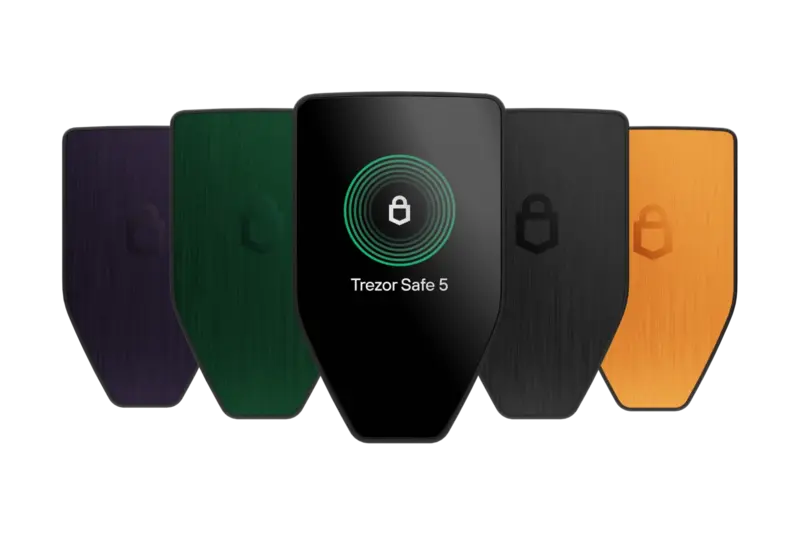
The Trezor Safe 5 is the latest offering from SatoshiLabs, the creators of Trezor. Known for its robust security architecture, the Safe 5 integrates seamlessly with popular wallets and platforms, ensuring flexibility and convenience. With a sleek design, intuitive interface, and advanced cryptographic technologies, it supports a wide range of cryptocurrencies while offering features like password management and two-factor authentication. Ideal for both beginners and experienced users, the Trezor Safe 5 prioritizes ease of use without compromising on security.
Key Features
- Secure Offline Storage: Stores private keys offline to prevent unauthorized access.
- Touchscreen Interface: Intuitive and responsive touchscreen for easy navigation.
- Password Manager Integration: Manage and secure passwords alongside cryptocurrency assets.
- Two-Factor Authentication (2FA): Adds an extra layer of security for transactions and account access.
- Backup and Recovery: BIP39 standard seed phrase ensures data can be restored if lost.
| 👍Pros | 👎Cons |
|---|---|
| High security with EAL6+ Secure Element | No Bluetooth, requiring a wired connection for use |
| User-friendly color touchscreen interface | Limited support for some less common cryptocurrencies |
| Two-factor authentication (2FA) | No built-in battery; must be connected to use |
| Durable build with Gorilla Glass 3 | |
| PIN & Passphrase protection | |
| Open-source firmware for transparency |
Safepal X1
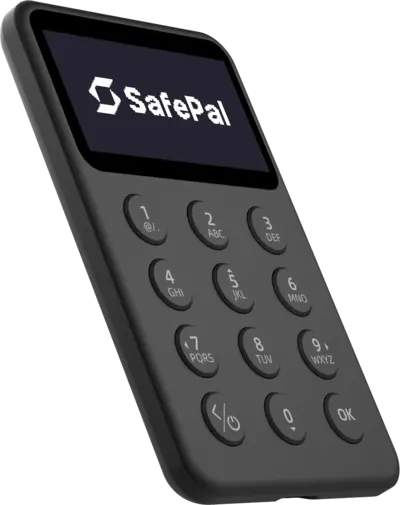
The SafePal X1 is a hardware wallet from SafePal, a company known for providing secure and user-friendly storage solutions for cryptocurrencies. As part of the SafePal ecosystem, the X1 provides seamless integration with the SafePal app for managing, sending, and receiving digital currencies. The X1 model introduces Bluetooth connectivity alongside open-source firmware, aiming to balance security with convenience. It’s designed for users who want to manage their digital assets securely but also appreciate the ease of wireless transactions.
Key Features
- Bluetooth Connectivity: Allows for wireless connection to mobile devices, making asset management more accessible on the go.
- Open-Source Firmware: Enhances transparency and security by allowing the code to be reviewed by the community.
- EAL5+ Secure Element: Employs a secure element chip for storing private keys, offering protection against tampering.
- Compact Design: Features a 1.8-inch monochrome screen with a 12-button interface for ease of use.
| 👍Pros | 👎Cons |
|---|---|
| Affordable price without sacrificing security | No touchscreen; uses physical buttons |
| Lightweight and portable design | Small screen may limit user experience |
| Physical security with self-destruct mechanism | |
| Support 100+ blockchains and unlimited tokens | |
| Easy setup and use with SafePal app |
ELLIPAL Titan Mini Cold Wallet
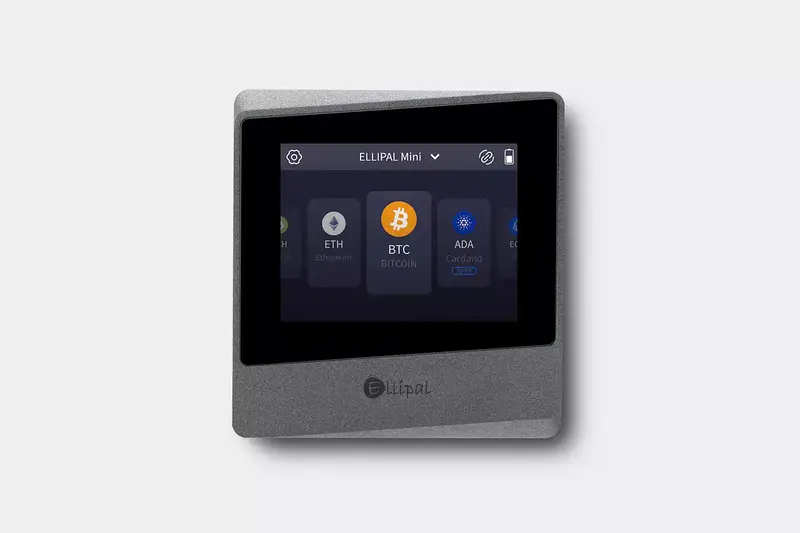
The ELLIPAL Titan Mini Cold Wallet is a compact and ultra-secure hardware wallet designed for cryptocurrency storage. As a part of the ELLIPAL ecosystem, it offers a completely air-gapped solution that eliminates any risk of online hacking. The Titan Mini is built with a solid metal body and features a large touchscreen for intuitive navigation. It supports over 10,000 cryptocurrencies and integrates with the ELLIPAL mobile app for easy transaction management via QR code scanning. The Titan Mini is ideal for users seeking a highly secure, portable, and user-friendly wallet for managing their digital assets without sacrificing space or performance.
Key Features
- Air-Gapped Security: Operates offline, ensuring no direct connection to the internet for added protection.
- Anti-Tamper and Anti-Disassembly: Physical security features prevent unauthorized access, with a self-destruct mechanism if tampering is detected.
- Compact Design: Smaller and more portable than the full-sized Titan wallet, making it easy to carry and store.
- QR Code Transactions: Supports secure, offline transaction signing through QR codes.
- Wide Crypto Support: Manages over 10,000 coins and tokens, including NFTs.
| 👍Pros | 👎Cons |
|---|---|
| Completely air-gapped for enhanced security | No direct PC or laptop connection capability |
| Supports 10,000+ coins & tokens | Higher cost compared to other mini wallets |
| Auto-selfdestruct Mechanism | |
| Secret Secondary Wallet Option | |
| ELLIPAL app integration for ease of use |
Crypto Hot Wallet vs Cold Wallets
1. Hot Wallet
A hot wallet is a cryptocurrency wallet that is connected to the internet, making it more convenient for everyday transactions but also more vulnerable to cyberattacks.
Types of Hot Wallets:
- Software Wallets: These can be desktop, mobile, or web-based. Examples include MetaMask, Exodus, and Trust Wallet.
- Exchange Wallets: Wallets provided by cryptocurrency exchanges like Binance, Coinbase, and Kraken. These wallets store your crypto on the exchange platform, making them accessible through the platform’s website or app.
Advantages
- Convenience: Hot wallets are easy to access and use for everyday transactions. You can quickly send, receive, and manage your assets.
- Accessibility: Since they are connected to the internet, hot wallets can be accessed from anywhere, making them ideal for active traders or those who need to move assets quickly.
Disadvantages
- Security Risks: Since they are connected to the internet, hot wallets are vulnerable to hacking, phishing attacks, malware, and other cyber threats.
- Less Control: With exchange wallets, the private keys are held by the exchange, meaning you don’t have full control over your assets.
2. Cold Wallet
A cold wallet, also known as a cold storage wallet, is not connected to the internet, offering a higher level of security by reducing the risk of online attacks.
Types of Cold Wallets:
- Hardware Wallets: These are physical devices that store your private keys offline. Examples include Ledger Nano S, Ledger Nano X, and Trezor.
- Paper Wallets: A paper wallet is simply a printed copy of your public and private keys on paper. This method is an offline solution to store crypto but comes with risks of physical damage or loss.
Advantages
- Security: Cold wallets are considered much more secure because they are not connected to the internet. They are immune to online hacks, phishing, and other internet-based threats.
- Control: In the case of hardware wallets, you fully control your private keys, giving you more security and independence from third parties.
Disadvantages
Risk of Loss or Damage: If you lose your cold wallet (e.g., hardware wallet) or your paper wallet gets damaged or destroyed, you might lose access to your funds unless you have a backup of your recovery phrase.
Less Convenient: Cold wallets are less convenient for frequent transactions since they require a physical device or paper to access the funds. You must connect the hardware wallet to a computer or use a specific app to transfer assets.
Comparison Table
| Feature | Hot Wallets | Cold Wallets |
|---|---|---|
| Security | Lower, exposed to online threats | Higher, stored offline, immune to online attacks |
| Accessibility | High, easy and fast access | Low, slower access, requires physical connection |
| Best For | Frequent trading, small amounts of crypto | Long-term storage, large amounts of crypto |
| Examples | Software wallets, exchange wallets | Hardware wallets, paper wallets |
| Cost | Free or low cost | Higher upfront cost |
| Transaction Fees | Low transaction fees | Same as hot wallets, but added steps to access |
| Backup and Recovery | Cloud or email backup, internet risks | Recovery seed stored offline |
| Privacy | May be tied to exchanges/platforms | Greater privacy, no centralized service |
Factors to Consider When Choosing a Cold Crypto Hardware Wallet
Security Features:
Ensure the wallet you choose has robust security features such as encryption, backup options, a PIN code, and a recovery seed. The more advanced the security, the better protected your assets will be.
Ease of Use:
Even though hardware wallets are focused on security, they should still be user-friendly. Consider how easy it is to set up and manage your wallet. Some wallets come with detailed user guides, apps, or customer support to assist during the setup process.
Supported Cryptocurrencies:
The more cryptocurrencies a wallet supports, the more versatile it will be. Make sure the wallet supports the coins and tokens you plan to store.
Price:
While you don’t want to skimp on security, consider your budget. Some wallets offer premium features at a higher price, while others provide excellent value at more affordable rates. Weigh the features against the cost to determine what fits your needs.
Brand Reputation:
Research the brand’s reputation for security and reliability. Established brands like Ledger, Trezor, and BitBox have a proven track record of providing secure and reliable hardware wallets.
FAQs About Crypto Hardware Wallets
Some of the top cold crypto hardware wallets in 2025 include:
Ledger Nano X
Ellipal Tian 2.0
Trezor Safe 5
Safepal X1
Keystone 3 Pro
ELLIPAL Titan Mini
Security in hardware wallets primarily comes from features like secure element chips (with certifications like EAL5+ or EAL6+), air-gapped operation, tamper-proof designs, and methods like QR code scanning for transactions which keep the device offline. Encryption, multi-signature support, and offline storage of seed phrases also contribute to security.
While most cold hardware wallets support popular cryptocurrencies like Bitcoin, Ethereum, and Litecoin, the full list of supported coins depends on the specific wallet. Some wallets, such as Ledger, Ellipal and Trezor, support a wide range of coins and tokens, while others may focus on specific types.
If you lose your cold wallet, you can still recover your crypto using the recovery seed phrase that you should have stored securely in a separate location. As long as you have this seed phrase, you can recover your funds using a new hardware wallet or compatible software wallet.
Yes, cold crypto hardware wallets are definitely worth the investment for those who prioritize security. As the value of cryptocurrencies continues to grow, so does the risk of cyber threats. Cold wallets provide one of the most secure ways to store crypto assets long-term and protect them from potential hacks or theft.
Yes, most cold wallets require a computer or mobile device to interact with the wallet and manage cryptocurrency transactions. However, the private keys remain stored securely on the hardware device, never being exposed to the internet.
Yes, some cold hardware wallets support the storage of NFTs, especially those that are based on Ethereum and other blockchain platforms. However, make sure the wallet supports the specific blockchain and token standard that the NFT uses.
Using a cold hardware wallet generally does not involve any fees, apart from the initial purchase cost of the device. However, transaction fees may apply when sending cryptocurrencies from your cold wallet to an exchange or another wallet, depending on the blockchain network used.
Cold hardware wallets can be a bit more complex for beginners compared to software wallets, but most manufacturers provide detailed guides to help with setup and usage. They are a great option for those looking for enhanced security once they familiarize themselves with the setup process.
Conclusion
Choosing the right hardware wallet depends on your specific needs, whether it’s portability, security, or multi-currency support. Each of these eight wallets offers unique advantages, making them ideal for various user profiles. Consider the features, pros, and cons carefully to make an informed decision.


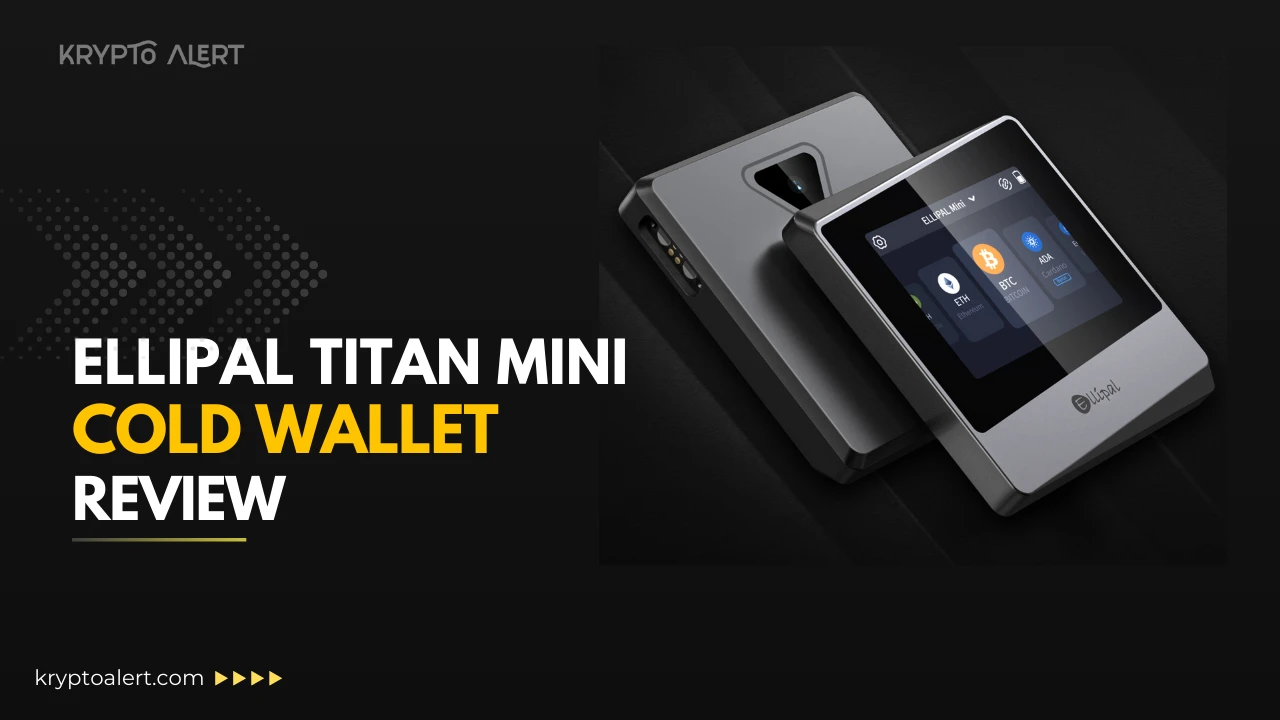

Leave a Reply